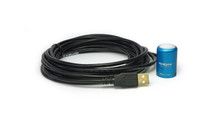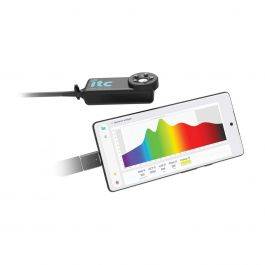Not exactly a popular opinion but LEDs really should be checked every year for the 5 + yr lifespan.
Unlike mh and t5 who's lifespan is relatively predictable or just " tossed" on a schedule seeing if the diodes are fading is practically impossible by eyeball.
Now proper designs with quality LEDs shouldn't have this as an issue in under 5 yrs BUT, honesty, there isn't much of a track record to go on here.
If one has a laptop or compatible the USB sensor is cheaper.

SQ-520: Full-Spectrum Smart Quantum Sensor (USB)
The SQ-520 smart full-spectrum quantum sensor can be connected directly to a computer to take spot measurements or graph and log real-time PPFD using the included software.www.apogeeinstruments.com
Cost of 2 years of bulbs and it still holds some financial value.
That said the new seneye/parwise are even cheaper.

PARwise USB Light Meter
All the Metrics Needed to Make Informed Decisions about your Aquarium Light Compatible with any light source Can be used wet or dry Works with Windows PC, macOS*, and Android devices Measures multiple lighting metrics: PAR (PPFD – Photosynthetic Photon Flux Density µMol/m2/S) Kelvin (Color...www.bulkreefsupply.com
Not completely sold on its absolute accuracy but should be good for relative measurement.
No reason for this feeling though.
+1. Part of why I wanted to own one. To track degradation. Also allows me to make spectral shifts and keep par stable which tends to lessen the negative effects

















